12 Foods That Make You Hungrier
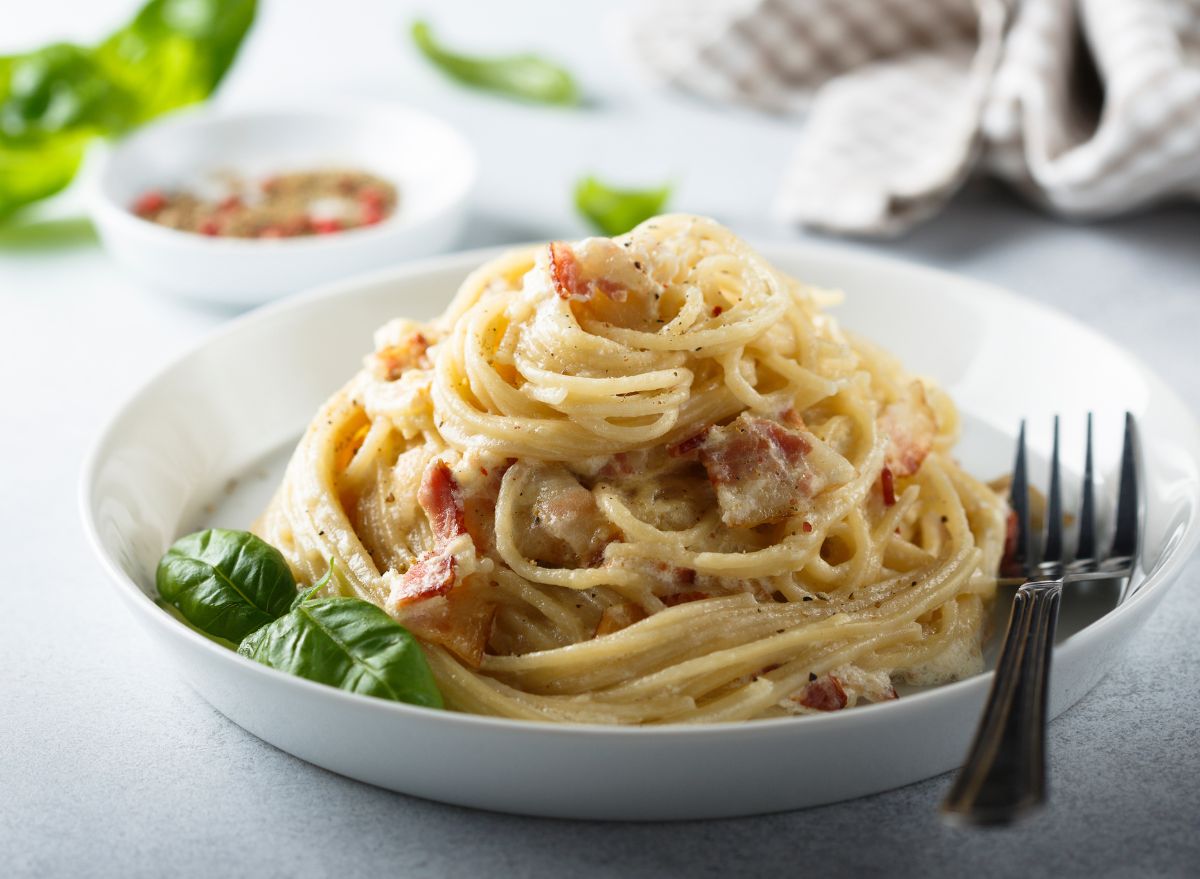
If you often find yourself reaching for a snack shortly after eating certain foods, it’s not all in your head. Some foods actually spike your appetite and make you hungrier.
Foods that are made up of mostly refined carbohydrates and are high in sugar are usually to blame because they often lack satiating protein and fiber. The high refined carbs, low fiber, and protein combo can mess with your blood sugar levels, contributing to insatiable cravings and hunger.
We spoke to Destini Moody, RDN and Lena Bakovic, RD, two dietitians at Top Nutrition Coaching, to find out which foods are guilty of causing your hunger pangs. Rather than reaching for one of these unfulfilling foods, sit down to one of these 14 Healthy and Delicious Snacks That Will Make You Feel Full instead.
Pastries
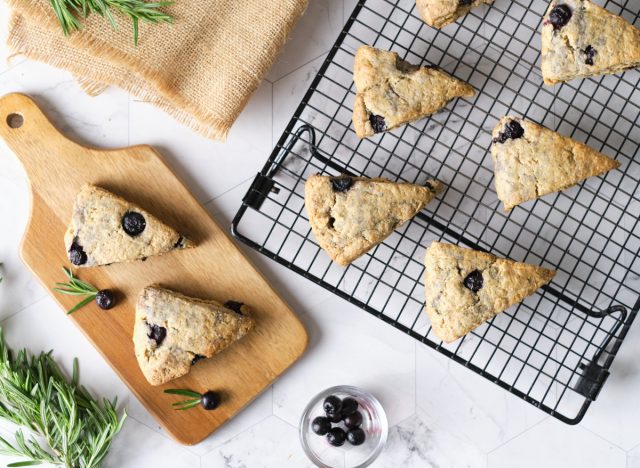
We’re familiar with the temptation of waking up hungry and aggressively eyeing the glittery goodness of sugary scones at your favorite coffee shop while waiting for our morning brew. But sugary pastries are some of the worst items you can start your day with and certainly aren’t a complete breakfast.
“These baked goods are great for satisfying your palate but are not super satisfying to the stomach as they tend to be dense in [simple] carbs,” Moody says. “Without enough protein or fiber (which pastries tend to lack), these treats will spike your blood sugar, causing a rebound of a blood sugar crash soon after.” When your blood sugar gets low, you end up feeling hungry and tired — and that isn’t ideal if you’re just starting your day off. “Pair these sweet treats with some protein such as boiled eggs or Greek yogurt to mitigate this effect,” Moody recommends.
Bagels and Croissants
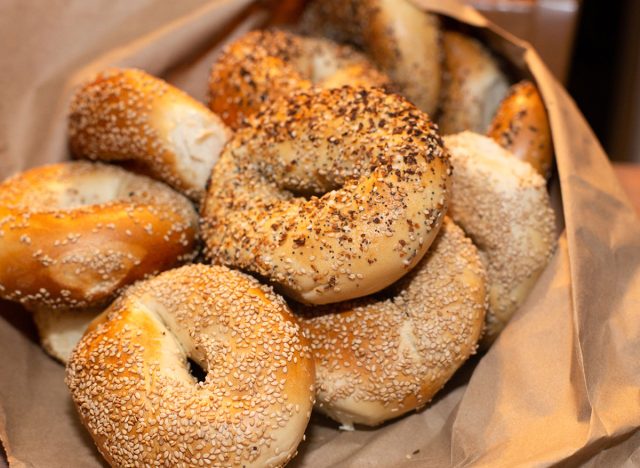
Bagels and croissants may look satisfying because they’re large and fluffy, but in reality, their makeup makes them leave you wanting more. These delicious breakfast staples are made of simple carbohydrates mostly from white flour. “When we consume simple carbs with little to no fiber [like bagels and croissants], we may see sharp blood sugar spikes and then subsequent crashes which, in turn, causes us to feel hungrier sooner,” Bakovic says.
A classic 2010 study in Nutrition Research compared fullness levels after eating a bagel versus an egg and found that people felt hungrier and less satisfied after the bagel breakfast. What’s more, this resulted in the bagel group eating more calories throughout the day. A similar study compared eggs with croissants and found that people eating eggs for breakfast felt more satiated compared to those who ate a croissant breakfast, per the 2013 study in the European Journal of Nutrition.
If you’re having a bagel or croissant for breakfast, choose a whole-grain variety for complex carbs and sustained energy, and pair it with protein such as eggs or lox for more staying power.
Low-fat traditional yogurt
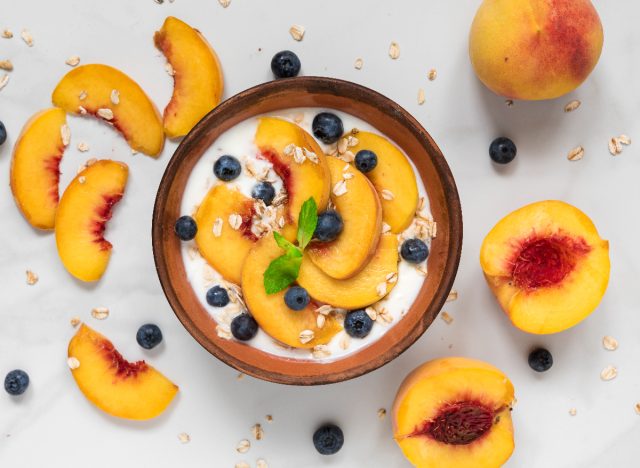
Yogurt might be the superfood poster child, but the type of yogurt you choose can make or break its health factor. For example, a 6-ounce fruit-on-the-bottom yogurt has about 140 calories, 6 grams of protein, and 24 grams of sugar, per the USDA. Instead, opt for plain Greek yogurt or skyr, which naturally has triple the protein, with 17 grams of protein and just 6 grams of natural sugars from lactose.
“The higher protein content of Greek yogurt can help us with feeling full for longer,” Bakovic says. Add some fresh fruit, nuts, and seeds for additional fiber and healthy fats, two nutrients that help keep you satiated. “Greek yogurt is a great snack option, a breakfast ingredient, and smoothie add-in for a protein boost,” Bakovic says.
Potato chips and pretzels
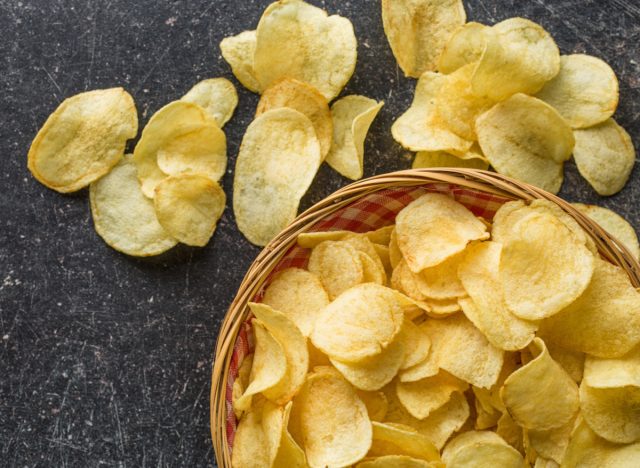
Eating a handful of chips or pretzels easily leaves us wanting more… way more. And you can chalk that up to the salt. “Salt makes nearly anything taste better because it makes you salivate,” Moody says. “More saliva means more active receptors on your taste buds, which means more depth of flavor.”
But there’s another reason we crave salty food: Scientists hypothesize that humans crave salt due to the possibility that salt triggers the release of dopamine, which is a hormone that allows us to feel satisfaction. “This can create a vicious cycle since salty snacks like potato chips and pretzels tend to be full of refined carbs and hardly any fiber to slow down your digestion,” Moody says. This makes you hungrier sooner, which could leave you reaching for more chips, and, well, the cycle continues.
Alcohol
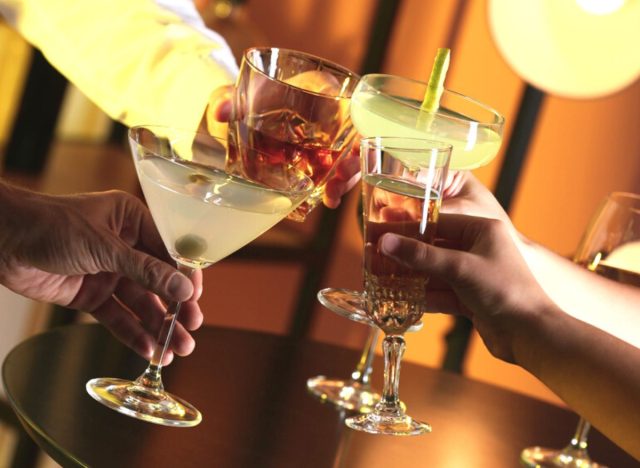
We know it’s not foo,d but it’s worth a reminder that alcohol can seriously spike your hunger. “As your body processes alcohol, the release of glucose [sugar] by the liver is slowed, and this may produce a low blood sugar level. Sometimes, blood sugars can quickly rise and then fall after alcohol is ingested,” Bakovic says. This rapid rise and fall in blood sugar levels can leave you craving all the snacks. And the effects are made even worse if you usually pair your liquor with orange or cranberry juice or soda. “Sugary beverages can produce a higher spike in blood sugars,” Bakovic says.
Not only that, but alcohol can increase your cravings for carbohydrates, in particular. That’s because the process of removing alcohol from our body alters our blood sugar balance and depletes our storage of glycogen, or stored carbs, Bakovic says. That leaves you craving more carbs, as carbs most readily turn into glucose in our bodies. Now that explains your ravenous need for pizza and fries at 3 a.m. last weekend.
Low-protein granola bars
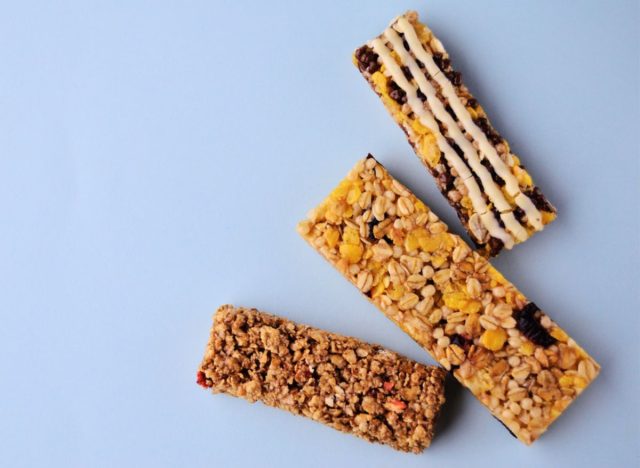
Granola bars that are high in sugar and low in protein are just glorified candy bars — seriously, some of them have upwards of 15 grams of sugar. “Granola bars that are low in protein don’t tend to keep you feeling full for long as it’s protein that is effective at inducing satiety, otherwise known as a feeling of fullness,” Moody says.
“Therefore, when searching for a bar to snack on between meals, choose one with around 20 grams of protein.” We especially love Built Bar and Quest Bar because they’re high in protein and low in sugar.
White rice
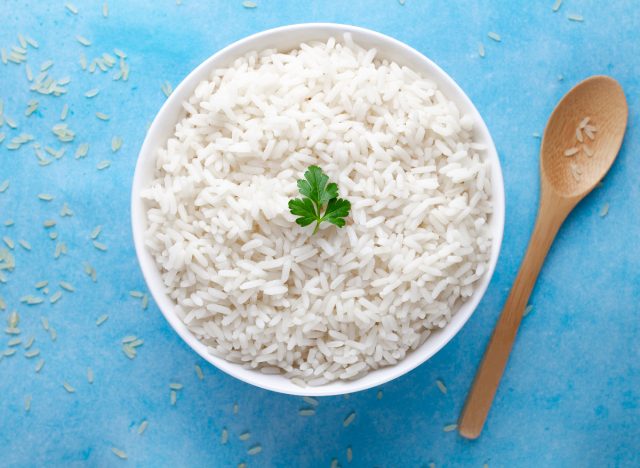
White rice isn’t terrible for you, but it’s better to choose brown or black rice more often, Moody says. What makes rice white is how it is processed: All white rice starts out as brown rice, which is then refined and polished to remove the outer, brown coating called the bran, Moody says. This is what gives white rice its pearly color along with its soft texture.
“The problem with this is that nearly all the fiber and B vitamins in rice are found in the bran,” she says. “Vitamin B1, also known as thiamin, was discovered after the Japanese Imperial Navy experienced a widespread B1 deficiency after switching their diet from brown rice to white rice. After many men died from beriberi, the very unpleasant disease that occurs as a result of a lack of B1, it was discovered that the ‘treatment’ was eating brown rice again.”
Not only are the vitamins in the bran important, but the fiber in the bran also plays a role in controlling hunger. “Without fiber, eating a portion of white rice speeds up the insulin response and speeds up stomach emptying, which ends up making us hungrier in the long term,” Moody says.
White bread
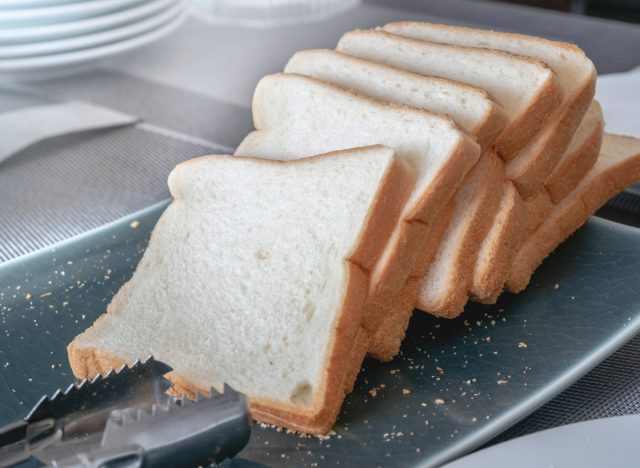
White bread is similar to brown rice in that the bran has been removed from the wheat kernels that go into making the bread. “The food industry will sometimes even take it a step further and use potassium bromate or chlorine dioxide to bleach the flour and take away any natural yellow color to make it more white,” Moody says. Why’s this done? Purely for aesthetics or, in other words, just to make the bread look prettier for the consumer. But as a result, the bread is stripped of most of its nutrients and fiber which do little to keep you feeling full. In fact, one slice of white bread offers less than a gram of fiber, according to the USDA.
That said, if you’re craving a sandwich made with softer white bread, Moody recommends piling it high with some lean protein like sliced deli turkey or chicken along with low-fat cheese. You’ll also want to add some fiber from veggies like arugula, sprouts, or bell peppers. “This way, you have some compounds that will slow down the digestion and keep you feeling a little more satisfied until dinner time,” she says.
Sugary cereals
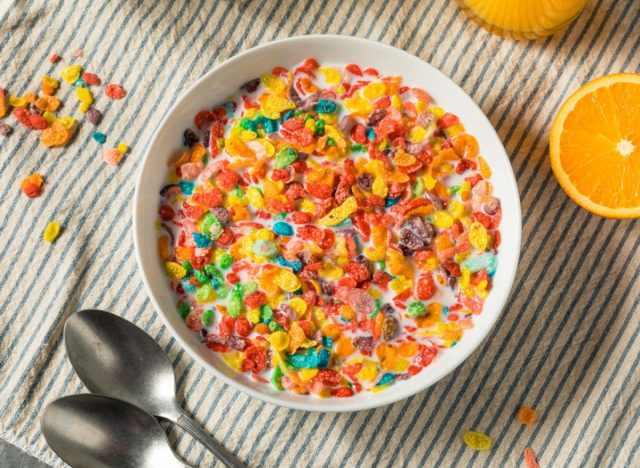
Sugar-sweetened cereals — think: the fruity or cocoa-spiked box you craved as a kid — are generally made up of, you guessed it, sugar. And that means they don’t contain nearly enough fiber and protein, which both help with a feeling of fullness, Bakovic says. “That’s why consuming these types of cereals may cause sharp blood sugar spikes and then subsequent drops.”
If you love eating cereal and want something that’ll help you avoid hunger and keep your blood sugar levels more stable, choose a box that boasts more than 5 grams of fiber per serving. Another pro tip: Pair your cereal with high-protein milk, such as dairy or soy milk, or use Greek yogurt as the base instead.
White pasta
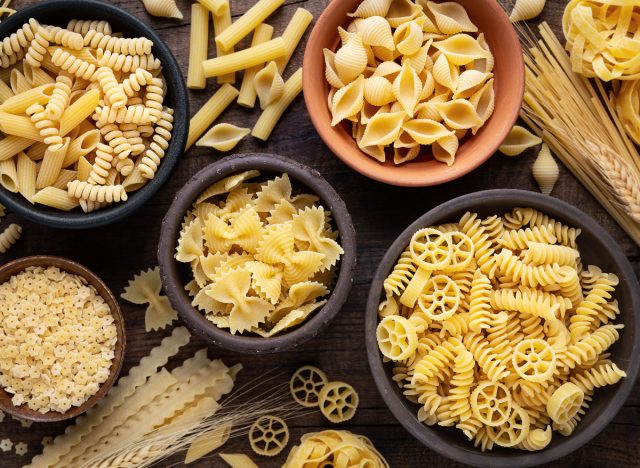
Like with many other sources of carbs, you can find pasta in both white (refined) and whole-grain forms. And it’s the white pasta you’ll want to avoid more often if satiety is your goal. White pasta is made of refined flour, which is much lower in fiber, vitamins, and minerals than carbs from whole-grain sources.
“Most pastas available in stores are made from refined flour sources without much fiber content, which can produce blood sugar fluctuations and feelings of hunger soon after consumption,” Bakovic says. On the other hand, complex carbs, such as whole-wheat pasta take longer to digest, which can help keep us feeling full for longer.
Juice
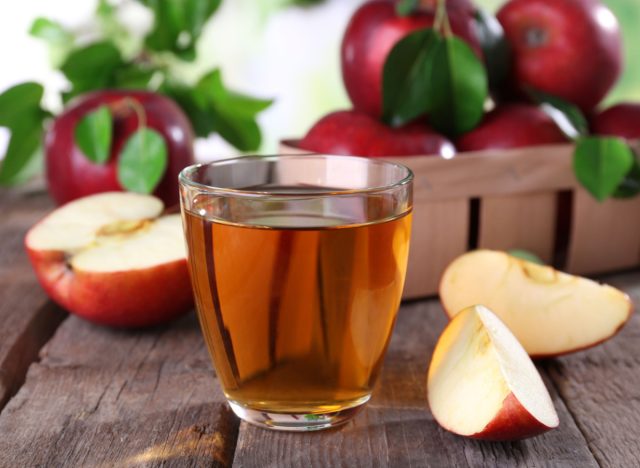
Just because it’s made of fruit, doesn’t mean it’s great for you. “Juice contains a high amount of sugar and little to no fiber — a combo that quickly raises blood sugar levels and then leads to subsequent crashes. “It’s these rapid blood sugar fluctuations that contribute to hunger and a lack of satiety,” Bakovic says.
If you’re craving something to drink that’s more substantial than water, try blending the fruits and veggies that you were planning on juicing, that way, you get more satiating fiber in the mix.
French fries
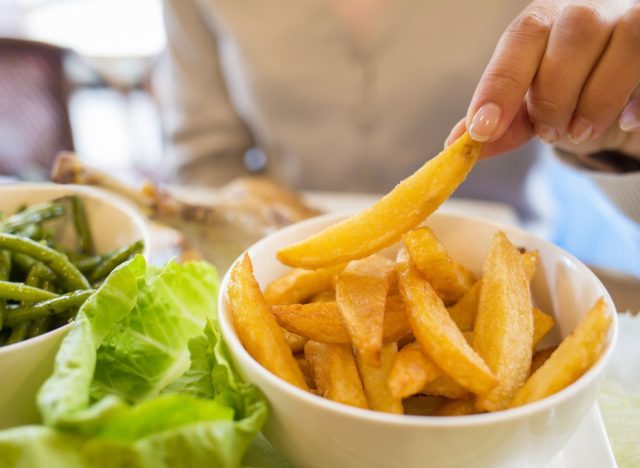
While potatoes are surprisingly great at promoting satiety, but they are significantly less effective when in French fry form. “This is because they are high in refined carbs and sodium, which are satisfying in taste, but not so much in hunger,” Moody says. “Without any protein or fiber, if all you are eating is fries, you’re likely to end up with cravings very soon after the bag is gone.”
- Source: https://pubmed.ncbi.nlm.nih.gov/20226994/
- Source: https://pubmed.ncbi.nlm.nih.gov/22948783/
- Source: https://tools.myfooddata.com/nutrition-facts/375193/oz/6
- Source: https://tools.myfooddata.com/nutrition-facts/170903/oz/6
- Source: https://www.sciencedirect.com/science/article/abs/pii/S0031938408001054?via%3Dihub
- Source: https://tools.myfooddata.com/nutrition-facts/174924/wt1/1









